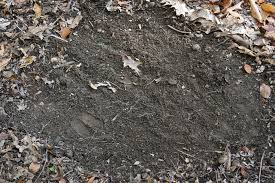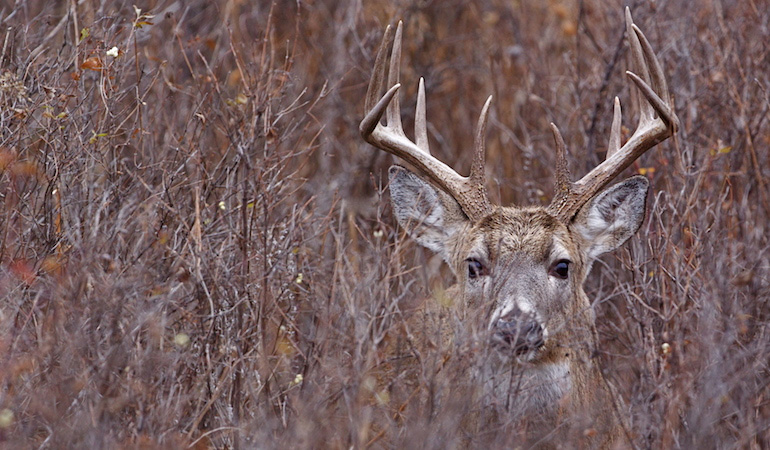Hunting The Rut
As the hunting season wears on, the excitement for the rut builds. This is an extremely exciting time for whitetail hunters for many reasons. This time of year, whitetail activity reaches its peak. Deer can be spotted walking around during daylight in open fields, through the woods, along the roadside and anywhere there is water, food, and other deer around. The rut happens in three phases: pre-rut, peak-rut, and post-rut. Each phase of the rut comes with its own pros and cons. Let's dive into each phase of the rut, what deer are doing during these phases, and some tips and tricks that may help you land a mature buck during the rut.
Phase 1: Pre-Rut
Here in Ohio, the pre-rut typically starts to take off at the beginning of the second week of October. During this time, bucks are moving around making scrapes/rubs to mark territories and to spread their scent as much as possible to alert close-by does that are in the area. A mature buck will make rounds to his scrape and rub sights to keep his scent fresh in the area. One tip for hunting the pre-rut is to watch for these signs. If you see a scrape or rub that looks fresh, put a trail cam focused on the scrape/rub, or hunt over that area. If it is fresh, that buck will more than likely stop by at some point to make sure no other bucks have left their scent in the area and to keep up on their work.
 Example of scrape markings
Example of scrape markings
 Example of rubbing
Example of rubbing
The difference between a scrape and a rub is simple, a scrape is made on the ground with the deer's hooves, utilizing the interdigital gland in between the split of its hoof. Rubs are made by using their antlers to rip the bark off trees, utilizing the forehead gland and pre-orbital gland to leave scent behind.
If you have patterned a buck on your property during this time, you may get a shot at him. It is best to hunt cover during this time, as bucks will try to stay hidden as they move during the day. After all, bucks do not get big by making stupid decisions. Creating mock scrapes/rubs may also improve your chances. During pre-rut, the buck's testosterone is ramping up, so when he believes another buck has entered his territory, he gets fired up.
Phase 2: Peak-Rut
Peak-rut is when the action really kicks off. This typically comes around the last week of October, through the first two weeks of November. In the last week of October, you will start to see bucks "seeking" does. They will have their nose to the ground, searching for that first smell of doe estrous. As we approach the first week of November, bucks will start chasing does. Literally, chase them! This is when deer activity is at a high. During the first week of November, it is not uncommon to drive alongside a cut cornfield and see a doe sprinting across, closely followed by a buck. Bucks will chase the does and try to corner them until the doe decides to pair with the buck. This can take a while, as some does play hard to get, and will be pursued by multiple bucks.
Once a buck has finally won over a doe, they move on to the tending phase. This is where they will mate and bed down with each other. This has its pros and cons. If you use attractants like doe estrous, you may be able to trick a buck into thinking you're a hot date, however, if he gets hooked on another doe's scent, it will be nearly impossible to get the buck to break off her scent trail. If they bed down together, you will have to wait quite a while before he gets up and starts moving again. I like to use the dual drag method for this time of year. Code Blue has a fantastic system for this. The basic concept is this: you have one string, 12-13 feet in length, and another that is 7-8 feet in length. On the end of each string, you have something that can absorb scent, such as a small bundle of paracord. On the shorter string, soak your paracord bundle with doe estrous, and the longer strings bundle with buck urine. This imitates a doe in heat being followed by a buck. Attach the strings to your pack or belt hook, and let them drag the ground behind you as you walk in. When you get to your spot, place the strings in a tree 20-25 ft away from you and wait. If all goes well, the buck that has claimed the territory you are hunting will come by looking for the doe/buck pair you created.
Phase 3: Post-Rut

During post-rut, everything starts to cool down. The last week of November and the first week or two of December, you have does coming out of heat and bucks are switching back to nocturnal. You may be able to catch a buck reacting to scents and calls during the post-rut, but overall, the deer activity really starts to slow down. It's best to hunt food and water patterns. I like to set myself up outside of a known bedding area in the direction of their food source to try to catch deer as they get out for the day. This can be a challenging time for hunters, as deer go back to being extremely cautious. It's best you do the same. Try making as little noise as possible on the way into your stand or blind. Keep in mind, at this point of the season, deer have been hunted for months, and they are very aware of this. Try to keep your scent under control and leave as little of a human imprint as possible.
All things considered; the rut is most hunters' favorite time of the year. This is the best chance of the year to land the buck they have been watching on cam for months. With the right strategies, the rut can be a rewarding time of year for your season. I hope this was informative and I would love to hear feedback from my readers as to what techniques you use to be successful during the rut.